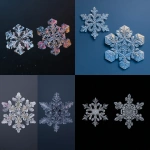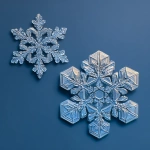Explore the Best AI Image Gallery

Quantum Creativity: Unlocking New Dimensions in the Arts
The realm of creativity is poised for a seismic shift with the advent of quantum computing. This revolutionary technology, harnessing the enigmatic principles of quantum mechanics, promises to unlock unprecedented possibilities for artists, designers, and innovators. From generating novel artistic expressions to revolutionizing design workflows, quantum computing is set to redefine the very fabric of creative endeavors.
Quantum Leaps in Artistic Expression
Imagine algorithms that can compose symphonies in a new language, generate abstract paintings inspired by subatomic particles, or craft immersive virtual reality experiences that transcend the limitations of human imagination. Quantum computers, with their ability to process information in parallel and explore vast solution spaces, empower artists to create works that were previously inconceivable.
One promising application lies in generative art. Quantum algorithms can analyze vast datasets of artistic styles, patterns, and historical trends, then leverage this knowledge to generate unique and original pieces. This opens doors for entirely new artistic movements, where the line between human and machine creativity blurs.
Reimagining Design with Quantum Power
Beyond the realm of fine art, quantum computing has the potential to revolutionize various design disciplines. Imagine architects using quantum simulations to optimize building structures for energy efficiency and resilience, or fashion designers creating garments that adapt to their wearers environment through embedded quantum sensors.
In product design, quantum algorithms can analyze complex systems and identify optimal solutions for material properties, manufacturing processes, and even user experience. This can lead to the creation of more sustainable, efficient, and innovative products.
Navigating the Ethical Landscape
As with any transformative technology, the integration of quantum computing into the creative industry raises important ethical considerations.
- Ownership and Authorship: When algorithms generate art or designs, who owns the copyright? How do we define authorship in a world where machines can create?
- Bias and Representation: Quantum algorithms are trained on data, and if that data reflects existing biases, the resulting creative outputs may perpetuate harmful stereotypes.
- Access and Equity: The high cost of quantum computing resources could create a divide between those who can afford to leverage this technology and those who cannot, potentially exacerbating inequalities in the creative sector.
Addressing these ethical challenges will be crucial for ensuring that quantum computing benefits all members of the creative community and fosters a more inclusive and equitable future.
Quantum Futures: Trends Shaping the Creative Landscape
The field of quantum computing is rapidly evolving, with ongoing research and development pushing the boundaries of whats possible. Several trends are shaping the future of quantum creativity:
- Hybrid Approaches: Combining quantum algorithms with traditional creative methods will likely lead to the most innovative and impactful results.
- Quantum-Enhanced Collaboration: Quantum computing can facilitate real-time collaboration between artists, designers, and engineers, breaking down geographical barriers and fostering a global creative ecosystem.
- Education and Democratization: Making quantum computing accessible to a wider audience through educational resources and open-source platforms will be essential for empowering the next generation of quantum creatives.
As we stand on the cusp of this quantum revolution, the creative industry is poised to experience a period of unprecedented transformation. By embracing the possibilities while navigating the ethical complexities, we can unlock the full potential of quantum creativity and shape a future where art, technology, and human imagination converge in extraordinary ways.








